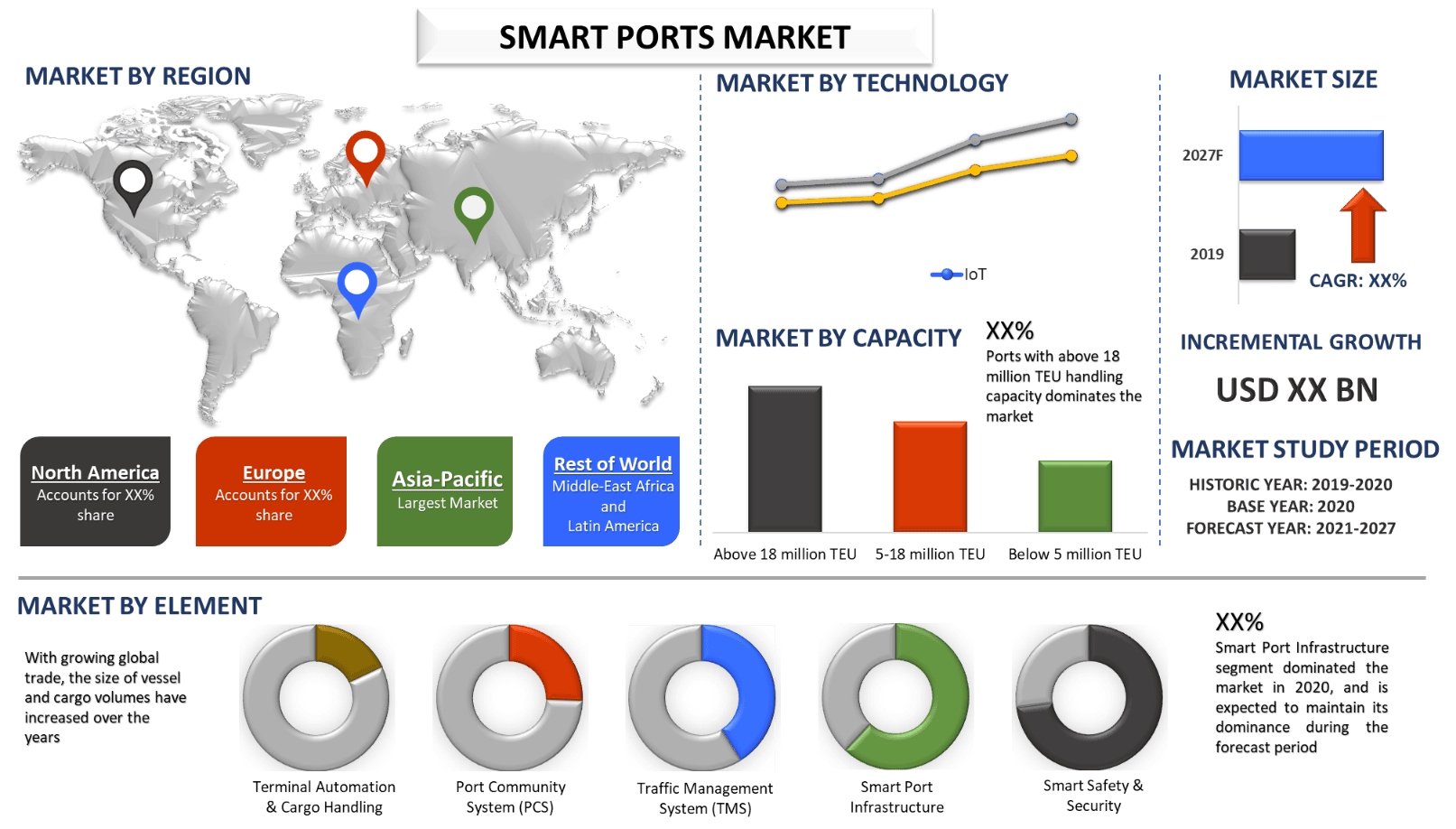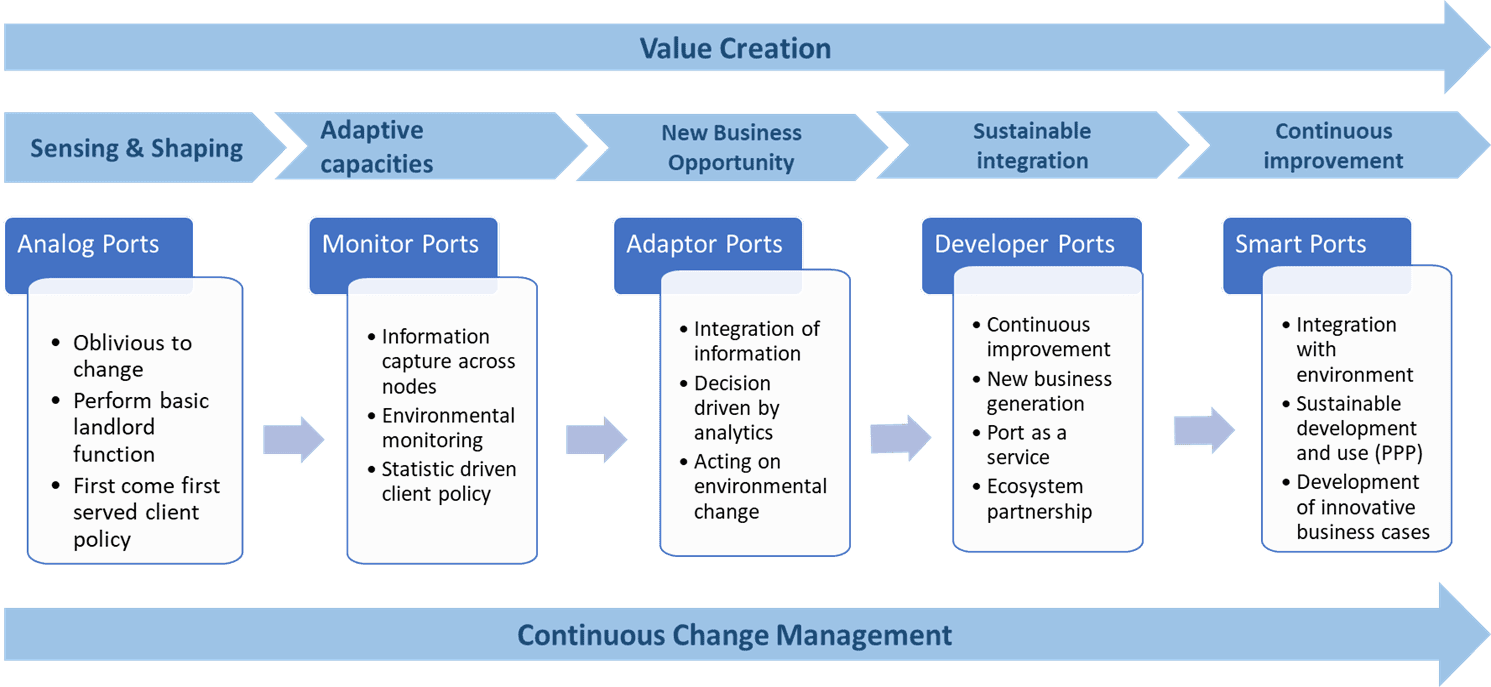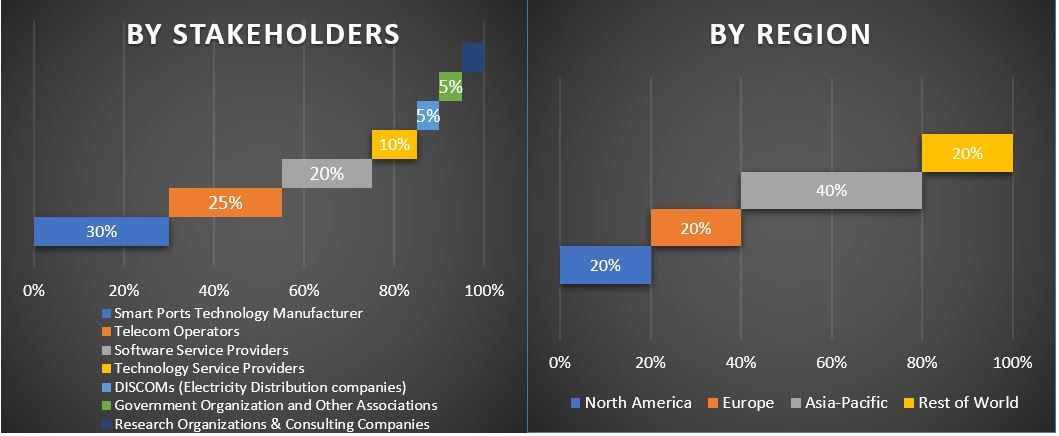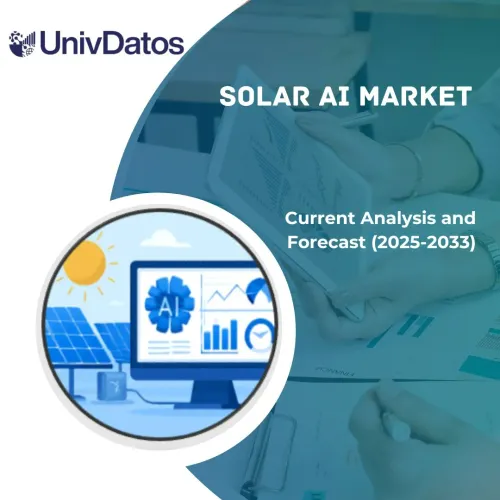- Home
- About Us
- Industry
- Services
- Reading
- Contact Us
Smart Ports Market: Current Analysis and Forecast (2021-2027)
Emphasis on Element (Terminal Automation & Cargo Handling, Port Community System (PCS), Traffic Management System (TMS), Smart Port Infrastructure, Smart Safety & Security); Technology (IoT, Blockchain, Process Automation, Artificial Intelligence (AI)); Capacity (Above 18 million TEU, 5-18 million TEU, Below 5 million TEU); Ports Type (Seaports, Inland Ports); Region and Country

Smart Ports Market was valued at ~US$ 1.5 billion in 2020 and is expected to grow at a CAGR of ~24% over the forecast period (2021-2027). Ports around the globe have gone through a structural and functional evolution over the past decades. Currently, a wave of technological innovation & integration is encouraging industries and businesses to digitally transform and become more data, and insight-driven, the port industry is no exception. The first generation of ports were known as loading and unloading ports, then came second generation industrial ports. Logistic and supply chain ports which operated between 1980-2010, were labeled as third generation ports. Post 2010, smart ports came into operation. Smart ports are ports that autonomously process daily operations and optimize logistics flow, using new and advanced technologies. Technologies used for optimizing port operations includes AI, Big Data, IoT and Blockchain. For instance, China is promoting construction of smart port pilot projects at 11 ports at government level in four areas, including intelligent port operation, safety management improvement, logistics integration, and business model innovation.
Value Creation of Smart Ports Industry

Covid-19 pandemic has resulted a decline in growth of the smart ports industry, as countries around the world were forced to implement lockdowns during the first half of 2020. Strict guidelines and policies were issued by country governments and local authorities to halt all the non-essential activities. This have adversely affected the smart port market owing to the suspension of activities of end users. In addition, production and supply chain delays were also witnessed during the second quarter of 2020, which poised a challenge to the smart port market, since end-user industries were still not operating at their full capacity.
Insights Presented in the Report
“Amongst element, Smart Port Infrastructure segment dominated the market in 2020.”
Based on element the global Smart Ports market is bifurcated into Terminal Automation & Cargo Handling, Port Community System (PCS), Traffic Management System (TMS), Smart Port Infrastructure, Smart Safety & Security. Smart port infrastructure segment dominated the market in 2020, as smart port infrastructure is the most intensive aspect of developing any port into a smart port.
“Amongst technology, IoT and AI would gain the major market share.”
Based on technology the market is divided into IoT, Blockchain, Process Automation, Artificial Intelligence (AI). Within the transport and logistic sector, companies have started experimenting with a wide range of connectivity and data-enabled technologies. IoT technologies are applied in diverse settings, from last mile transport optimization to warehouse and transport management systems.
“Amongst capacity, Extensively busy ports (more than 18 million TEU) dominate the market.”
Based on capacity, the market is bifurcated into ports handling above 18 million TEU, ports handling 5-18 million TEU and ports handling below 5 million TEU. Deployment of innovative digital technologies need huge upfront cost. Owing to huge initial cost requirement, large ports which handle containers in huge number dominates the market. Successful automated ports demonstrated that with proper planning and management, operating costs can be reduced by 25-50%, whereas efficiency could be increased by 10-35%. It has been observed that operating expenses at an automated port on average is reduced by 15-35%.
“Amongst Ports Type, Seaport segment generated highest revenue in 2020.”
Based on port type, the market is bifurcated into seaport and inland ports. In 2020, smart seaports segment dominated the market. XX segment is expected to witness highest CAGR growth during the forecast period. Seaports ensure operational efficiency as they are equipped with smart technologies such as smart sensors and IoT, these technologies make cargo handling easy for port operators.
“Asia-Pacific represents as the largest markets in the Global Smart Ports Market.”
For a better understanding of the market adoption, report provide detailed analysis for major region and countries including North America (US, Canada, Rest of North America), Europe (Germany, UK, France, Italy, Spain, Rest of Europe), Asia-Pacific (China, Japan, India, Australia, Rest of APAC), and Rest of World. Asia-Pacific (Specifically China) dominated the market in 2020. Asia-Pacific handles more than 70% by volume of the global cargo at the ports per year. With advancement of new technologies, such as artificial intelligence, the Internet of things and big data-analytics, all new era of transport systems has immerged. Countries in the Asia-Pacific region are thus trying to shift their traditional transport system technologies towards more automated ones. Some of the major companies profiled in the report includes General Electric, IBM Corp, Ramboll Group A/S, Royal Haskoning, Trelleborg, Siemens, Accenture, ABB Limited, Wipro Limited, Navis LLC.
Reasons to buy this report:
- The study includes market sizing and forecasting analysis validated by authenticated key industry experts
- The report presents a quick review of overall industry performance at one glance
- The report covers in-depth analysis of prominent industry peers with a primary focus on key business financials, product portfolio, expansion strategies, and recent developments
- Detailed examination of drivers, restraints, key trends, and opportunities prevailing in the industry
- The study comprehensively covers the market across different segments
- Deep dive country level analysis of the industry
Customization Options:
The Global Smart Ports Market can further be customized as per the requirement or any other market segment. Besides this, UMI understands that you may have your own business needs, hence feel free to connect with us to get a report that completely suits your requirements.
Table of Content
Analyzing the historical market, estimation of the current market, and forecasting the future of the Global Smart Ports Market were the three major steps undertaken to create and analyze the adoption of Smart Port solutions across the globe. Exhaustive secondary research was conducted to collect the historical market numbers and estimate the current market size. Secondly, to validate these insights, numerous findings and assumptions were taken into consideration. Moreover, exhaustive primary interviews were also conducted, with industry experts across the value chain of the global Smart Ports industry. Post assumption and validation of market numbers through primary interviews, we employed a bottom-up approach to forecast the complete market size. Thereafter, market breakdown and data triangulation methods were adopted to estimate and analyze the market size of segments and sub-segments the industry pertains to. Detailed methodology is explained below:
Analysis of Historical Market Size
Step 1: In-Depth Study of Secondary Sources:
Detail secondary study was conducted to obtain the historical market size of the Smart Ports through company internal sources such as annual report & financial statements, performance presentations, press releases, etc., and external sources including journals, news & articles, government publications, competitor publications, sector reports, third-party database, and other credible publications.
Step 2: Market Segmentation:
After obtaining the historical market size of the Smart Ports market, we conducted a detailed secondary analysis to gather historical market insights and share for different segments & sub-segments for major regions. Major segments included in the report are element, technology, capacity, port type. Further regional and country-level analyses were conducted to evaluate the overall adoption of the Smart Ports globally.
Step 3: Factor Analysis:
After acquiring the historical market size of different segments and sub-segments, we conducted a detailed factor analysis to estimate the current market size of Smart Ports. Further, we conducted factor analysis using dependent and independent variables such as growing need for Smart Ports solutions and government focus on optimizing port function etc. A thorough analysis was conducted for demand and supply-side scenario considering top partnerships, merger and acquisition, business expansion, and product launches in the Smart Ports industry.
Current Market Size Estimate & Forecast
Current Market Sizing: Based on actionable insights from the above 3 steps, we arrived at the current market size, key players in the Global Smart Ports market, and market shares of the segments. All the required percentage shares split, and market breakdowns were determined using the above-mentioned secondary approach and were verified through primary interviews.
Estimation & Forecasting: For market estimation and forecast, weights were assigned to different factors including drivers & trends, restraints, and opportunities available for the stakeholders. After analyzing these factors, relevant forecasting techniques i.e., bottom-up approach was applied to arrive at the market forecast to 2027 for different segments and subsegments across the major regions globally. The research methodology adopted to estimate the market size encompasses:
- The industry’s market size, in terms of value (US$) and the adoption rate of Smart Ports across the major markets
- All percentage shares, splits, and breakdowns of market segments and sub-segments
- Key players in the Smart Ports market in terms of services offered. Also, the growth strategies adopted by these players to compete in the fast-growing market.
Market Size and Share Validation
Primary Research: In-depth interviews were conducted with the Key Opinion Leaders (KOLs) including Top Level Executives (CXO/VPs, Sales Head, Marketing Head, Operational Head, and Regional Head, Country Head, etc.) across major regions. Primary research findings were then summarized, and statistical analysis was performed to prove the stated hypothesis. Inputs from primary research were consolidated with secondary findings, hence turning information into actionable insights.
Split of Primary Participants in Different Regions
Market Engineering
Data triangulation technique was employed to complete the overall market estimation and to arrive at precise statistical numbers of each segment and sub-segment of the Global Smart Ports market. Data was split into several segments & sub-segments post studying various parameters and trends in the areas of element, technology, capacity, port type.
The main objective of the Smart Ports Market Study
The current & future market trends of Global Smart Ports were pinpointed in the study. Investors can gain strategic insights to base their discretion for investments from the qualitative and quantitative analysis performed in the study. Current and future market trends would determine the overall attractiveness of the market at a country level, providing a platform for the industrial participant to exploit the untapped market to benefit as a first-mover advantage. Other quantitative goals of the studies include:
- Analyze the current and forecast market size of Smart Ports in terms of value (US$). Also, analyze the current and forecast market size of different segments and sub-segments
- Segments in the study include areas of element, technology, capacity, port type
- Defined analysis of the regulatory framework for the Smart Ports industry
- Analyze the value chain involved with the presence of various intermediaries, along with analyzing customer and competitor behaviors of the industry
- Analyze the current and forecast market size of the Smart Ports for the major countries
- Major regions/countries analyzed in the report includes North America (US, Canada, Rest of North America), Europe (Germany, UK, France, Italy, Spain, Rest of Europe), Asia-Pacific (China, Japan, India, Australia, Rest of Asia-Pacific), Rest of World
- Company profiles of the Smart Ports market players and the growth strategies adopted by them to sustain in the fast-growing market
- Deep dive country level analysis of the industry
Related Reports
Customers who bought this item also bought











